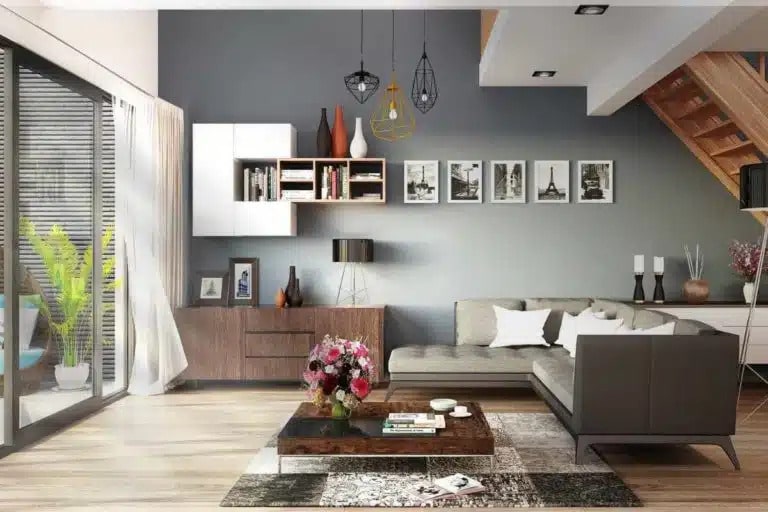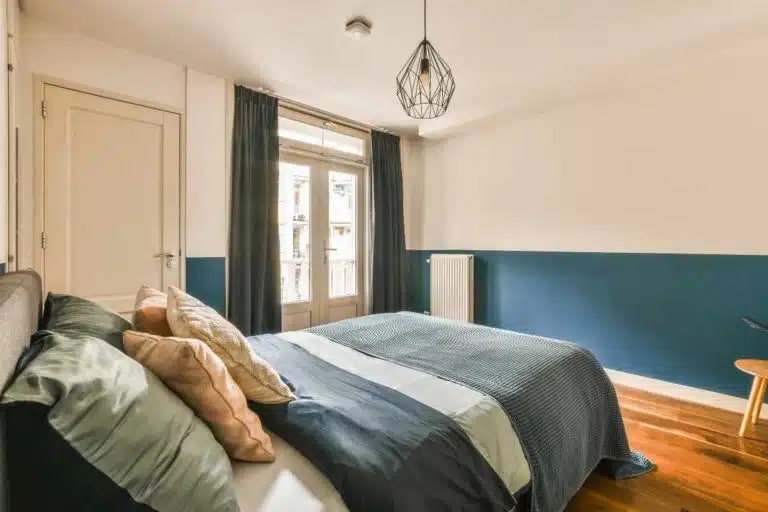
Call Us Today!

Call Us Today!

Have you ever walked into a room and felt an immediate sense of peace and tranquility? Or maybe you’ve experienced the opposite, feeling overwhelmed by the colors of the space.
Choosing the right accent colors in home decor can make all the difference when it comes to creating a space that meets your needs. Whether you’re aiming for a soothing atmosphere or something more vibrant and lively, accent colors can help you achieve your desired effect.
Let’s take a look at why these colors are so important in home decor and how they can be used to create the perfect setting.
Accent colors are colors that can be used in home decor and when painting to add excitement and contrast. They can be used to draw attention to certain elements of a room, such as an architectural feature or piece of furniture, or to brighten and bring together a room’s overall design.
They can be bold and vibrant, subtle and muted, or anything in between. When used correctly, accent colors can make a statement without overpowering the space.
When selecting an accent color for your home, consider how it will work with the existing colors in the room. You don’t want to clash with other colors or create too much distraction.
Look for hues that will complement and enhance your existing palette. Think about the other pieces you have in the room – artwork, rugs, furniture – and choose an accent color that will boost those pieces rather than detract from them.
There are several ways to incorporate accent colors into your home decor. The best way is by painting an accent wall a color that creates contrast and interest in your space.
An accent wall color is a singular wall or fixed feature that you paint a contrasting color to the rest of your walls. This added accent color will draw the eye and change the look and feel of your space.
You can always add other design features and elements to enhance the colors of your home, but an accent wall color will really help to elevate your space.
If you’re looking for other ideas to add interest to your home outside of adding an accent wall color, you can always try any of the following to add dynamic contrast within your home.
Examples:
When it comes to accent colors, it’s important to choose hues that complement each other. This means that the colors should be different enough that they stand out from one another, but still harmonize together to create a unified look in the room.
Neutral colors are usually a good starting point; they can be paired with brighter shades or even muted tones to create an interesting contrast. Neutral colors such as white, gray, and black are great for grounding a space and providing a backdrop for brighter colors.
They also help to create a sense of harmony in the room and can make bold pieces feel more cohesive with the overall design.
Related: Best Paint Colors for Orange Roofs
Another option is to use analogous colors, which are those that sit next to each other on the color wheel. These can be used for a more subtle effect, but when done right they can add some depth and texture to an interior space.
Choosing complementary colors isn’t just about aesthetics – it also has practical applications too. When used correctly, accent colors can draw attention away from problem areas in a room and help highlight its best features.
It’s also important to consider the lighting in your space when deciding on accent colors. Natural light during the day will affect how colors appear, while artificial light at night may cause them to look different again.
When choosing accent colors for your home, it’s important to consider the intensity of the color. Too much vibrancy can be overwhelming, while too little can make a space feel dull and lifeless. You want to find just the right balance – something that will draw attention without becoming a distraction.
A great way to do this is by using a combination of both muted and vibrant tones. Start by selecting one or two main colors that are subdued but still have some life in them. Then, you can paint an accent wall a brighter shade to create contrast and add visual interest.
It’s also essential to think about how the colors will interact with each other when planning out your design scheme.
Different combinations of shades can evoke different moods and create unique atmospheres within a single room. Experimenting with different palettes is a great way to discover which look works best for your home!
Once you’ve chosen the colors you want to use, it’s time to focus on how they’ll be arranged in your home. Creating contrast is key when it comes to making an impactful design statement.
For example, if you opt for a muted primary color like gray or tan on your walls, you can draw attention to an area of the room by adding a pop of brighter color. If the walls are already bold, then opt for more subtle accent wall color.
The color palette you choose for your space can set the tone and make a lasting impression. Choosing an accent color that complements the overall style of your room is essential, as it will help create an inviting atmosphere and draw attention to certain areas.
When deciding which colors to use, think about what kind of mood you want to evoke. Warmer colors like red or yellow tend to energize a space and make it feel vibrant, while cooler colors like blue or green can have a calming effect. You can also go for neutral tones like beige or white if you prefer something more subtle. Remember that there are no hard-and-fast rules when it comes to accent colors.
Related: The Best Blue Paint Colors
 How Do I Know Which Accent Colors Will Look Best In My Home?
How Do I Know Which Accent Colors Will Look Best In My Home?Consider the current color of your walls or the color you are going to paint them. If you have white or neutral colored walls, then you have lots of options when it comes to choosing an accent color. You could go for bright and bold colors or choose something more subtle like will accentuate the other wall color.
The next step is to think about where you want to place these accent colors in your home. Are you looking for something to add some contrast to an otherwise flat room? Or are you wanting to draw the eye to a built in feature like a bookshelf? Or maybe you want to bring attention to a certain piece of furniture like your bed?
Whatever it is, make sure that the color tone and hue fits into the overall décor of the room. Your accent wall color placement is up to you and your preference, but understand that wherever you decide to add that accent wall color, the eye will inevitably be drawn there!
Yes!
Using multiple accent colors can help create a visually dynamic and interesting space. When done well, different shades of the same color family can be used to enliven a room and add depth. Additionally, if you want an eclectic look, combining different contrasting colors can give a room character. To pull off the style successfully, make sure that the colors complement each other.
Related: How to Properly Test Paint Colors
Take into account the color scheme of your existing furniture. Look at what shades and hues are already present in the room and think about how adding a new color will affect the overall look. If there’s a lot of cool tones, for example, then you’ll want to pick an accent color that also has cool tones so that it won’t stand out too much or seem out of place.
so bring different pieces together by using colors that are opposite on the color wheel. When two colors are opposite each other, like blue and orange, they create a complementary contrast which makes for a really interesting design element. This way, when you paint your accent wall you can paint with confidence knowing that it won’t clash with the existing furniture, accent pieces or current wall color.
By paying attention to these details, you can ensure that your space looks harmonious and stylish without compromising on comfort or aesthetics.
Colors are subjective–at the end of the day it’s how you add the colors based on your preference. What we mentioned in this article are just tips to help you find a starting point. Our team at Kind Home Solutions is more than happy to provide you with more color tips. Give us a call today!